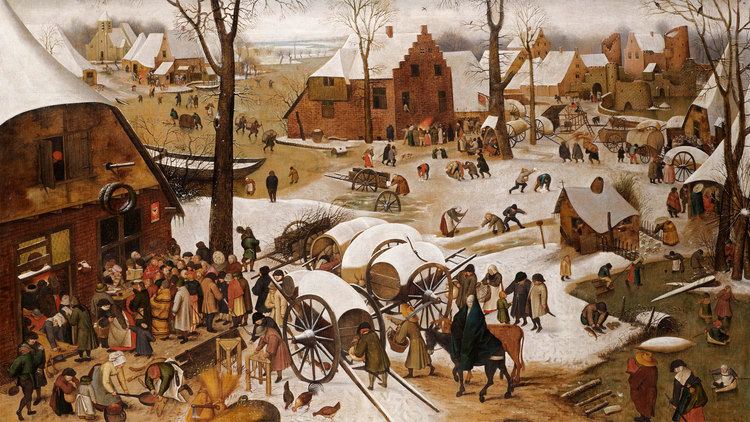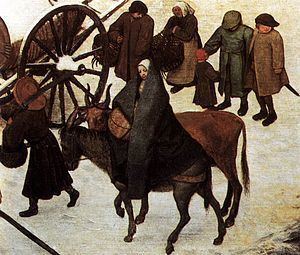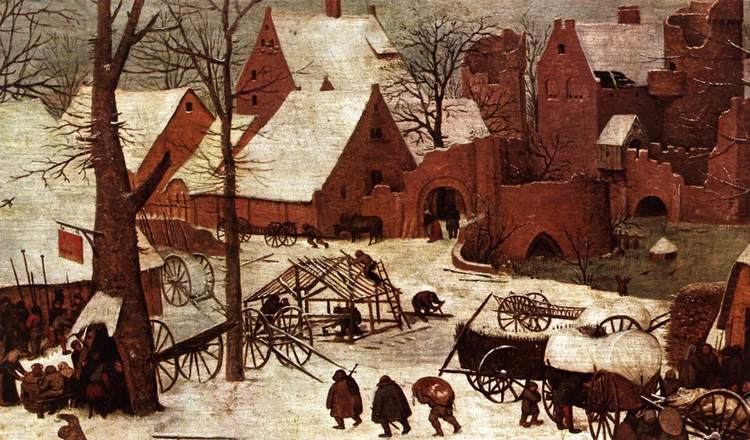Year 1566 Genre History painting | Created 1566 Media Wood, Paint, Oil paint | |
 | ||
Dimensions 116 cm × 164.5 cm (46 in × 64.8 in) Location Royal Museums of Fine Arts of Belgium (since 1902) Similar Pieter Bruegel the Elder artwork, Artwork at Royal Museums of Fine Arts of Belgium, Northern Renaissance artwork | ||
Pieter bruegel the census at bethlehem
The Census at Bethlehem (also known as The Numbering at Bethlehem) is an oil-on-panel by Flemish renaissance artist Pieter Bruegel the Elder, painted in 1566. It is signed and measures about 115,5 cm × 164,5 cm. It is currently held and exhibited at the Royal Museums of Fine Arts of Belgium in Brussels, which acquired it in 1902. It is one of the first paintings in western art to feature a significant snow landscape and was painted in the aftermath of the winter of 1565, which was one of the harshest winters on record.
Contents

Description

The painting shows a Flemish village in winter at sundown. A group of people is gathered at a building on the left. A sign bearing the Habsburg double-headed eagle is visible on the building. Other people are making their way to the same building, including the figures of Joseph and the pregnant Virgin Mary on a donkey. A pig is being slaughtered. People are going about their daily business in the cold, children are showing playing with toys on the ice and having snowball fights. At the very centre of the painting is a spoked wheel, sometimes interpreted as being a reference to the wheel of fortune. To the right, a man in a small hut is shown holding a clapper, a warning to keep away from leprosy. Leprosy was endemic in that part of Europe when the painting was created. There is a begging bowl in front of the hut. As he often did, Bruegel treats a biblical story as a contemporary event. And once again, reference to particular political events has been adduced - in this case, the severity of the Spanish administration in the southern Netherlands. However, Bruegel may well be making a more general criticism of bureaucratic methods.
The events depicted are described in Luke 2, 1-5:

This is a rare subject in previous Netherlandish art. The ruined castle in the backgroundsee 2nd detail is based on the towers and gates of Amsterdam.
Copies

Pieter Brueghel the Younger and his studio made dozens of copies of the painting after his father's death, one of which was sold at auction for $10 million dollars in 2013. Another copy, dated from 1610, is also at Royal Museums of Fine Arts of Belgium in Brussels.


